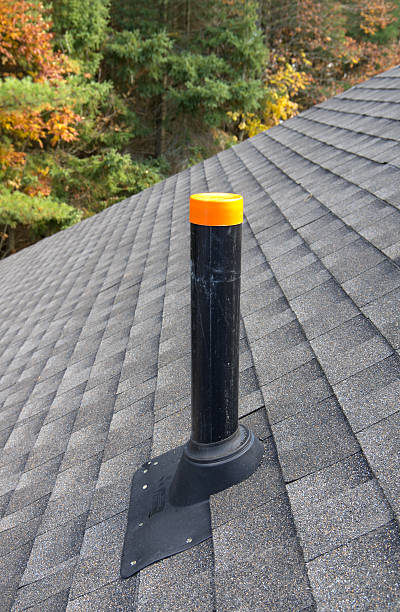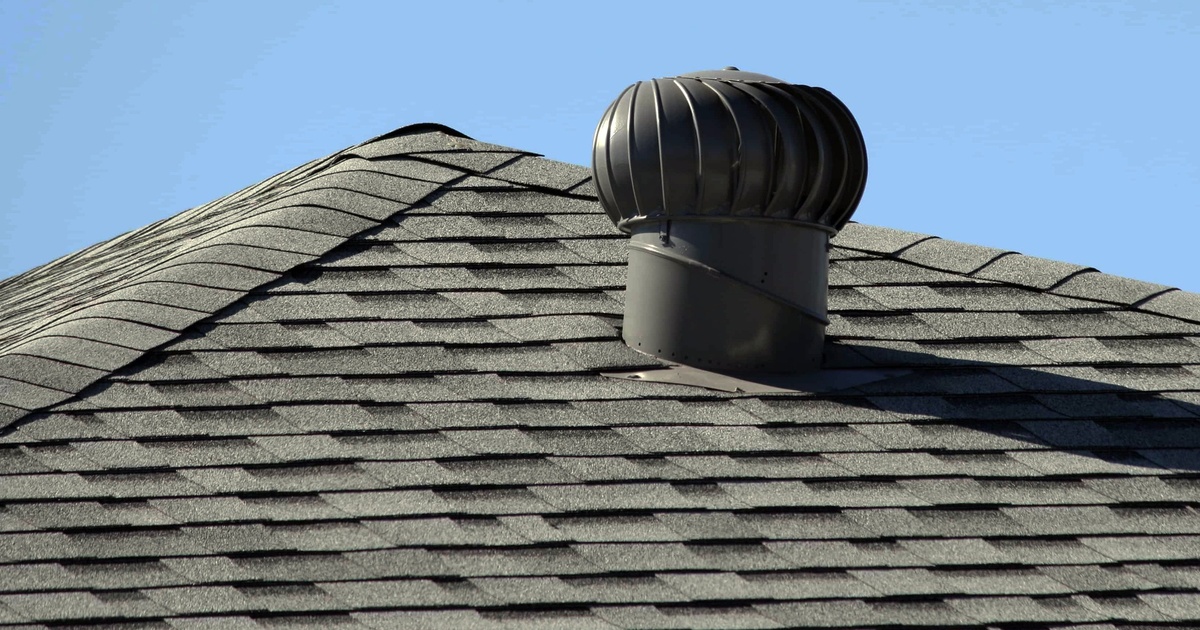How do you feel when it comes to Why Plumbing Air Vents Are Important?

Proper air flow in pipes systems is typically forgotten, yet it is important for keeping the functionality and security of your home's plumbing. Ventilation assists regulate air pressure, protect against the buildup of harmful gases, and guarantee the effective elimination of waste. In this guide, we will certainly explore the significance of appropriate plumbing ventilation, just how it functions, and the benefits it gives your pipes system.
Comprehending Air Flow in Pipes
Ventilation in pipes refers to the network of pipelines that permit air to flow through the drainage system. These vents serve multiple functions, consisting of controling atmospheric pressure within the pipes, preventing sewage system gases from getting in the home, and helping in the smooth circulation of wastewater.
How Air Flow Functions in Plumbing Systems
Air Pressure Policy
Proper air flow maintains balanced air pressure within the pipes system. When water moves via pipes, it displaces air. Without appropriate air flow, this variation can create adverse pressure, leading to reduce drains pipes or siphoning of water from catches, which can trigger undesirable odors to seep into the home.
Stopping Sewage System Gas Buildup
Among one of the most crucial functions of pipes vents is to prevent sewage system gases, such as methane and hydrogen sulfide, from building up within the home. These gases can pose serious health and wellness threats and are very flammable. Vent pipes enable these gases to run away securely outside.
Assisting in Waste Removal
Ventilation assists in the efficient elimination of wastewater by avoiding airlocks in the water drainage system. When air can move easily through the vents, it permits water and waste to move efficiently with the pipelines, minimizing the risk of clogs and backups.
Types of Plumbing Vents
Key Stack Vent
The main stack air vent, additionally referred to as the air vent pile, is the main vent in a plumbing system. It expands from the primary drain align with the roof, allowing gases to run away and fresh air to go into the system.
Branch Vent
Branch vents connect to the primary pile vent and serve private fixtures, such as sinks, bathrooms, and showers. These vents make certain that each fixture has ample ventilation to work properly.
Air Admission Shutoff (AAV).
An Air Admission Valve (AAV) is a one-way shutoff that enables air to enter the pipes system without the demand for a standard air vent pipeline extending through the roof. AAVs are typically made use of in restorations or locations where installing a basic vent is not practical.
Indicators of Poor Air Flow in Plumbing.
Slow Draining Fixtures.
If your sinks, tubs, or bathrooms are draining pipes slowly, maybe a sign of poor ventilation. Inadequate air flow can develop a vacuum cleaner impact, making it challenging for water to drain properly.
Gurgling Appears.
Gurgling sounds originating from drains are typically an outcome of air being sucked via water catches because of adverse pressure in the pipelines. This is a clear indicator of not enough ventilation.
Undesirable Odors.
Drain smells inside your home are a red flag that your plumbing system is not properly aerated. This could indicate that drain gases are not being sufficiently aired vent outside, bring about possibly harmful problems.
Common Air Flow Mistakes.
Poor Vent Sizing.
Making use of undersized air vent pipelines can lead to poor air flow and stress inequalities in the system. It's important to make use of vents that fulfill the particular requirements of your plumbing system.
Improper Vent Placement.
Placing vents too far from the components they serve can minimize their effectiveness. Appropriate positioning makes sure that air can move freely and effectively through the system.
Disregarding Code Demands.
Building regulations offer details standards for plumbing ventilation. Overlooking these codes can lead to a system that fails to operate properly and might result in costly repair work or health hazards.
Advantages of Correct Ventilation.
Boosted System Efficiency.
Appropriately ventilated pipes systems operate much more successfully, with fewer obstructions, faster draining, and much less pressure on the pipelines. This effectiveness extends the lifespan of the pipes system.
Improved Air High Quality.
By avoiding sewage system gases from entering your home, correct ventilation adds to better indoor air quality, making your living atmosphere healthier and extra comfortable.
Avoiding Water Damage.
Ample air flow aids protect against water from being siphoned out of traps, which can lead to sewer gases entering the home and causing water damage with time.
Actions to Make Sure Proper Air Flow.
Consulting Plumbing Codes.
Constantly seek advice from regional pipes codes when designing or customizing your pipes system. These codes give the needed standards for proper venting and guarantee your system satisfies safety standards.
Normal Examination and Maintenance.
Normal assessments can help determine potential ventilation concerns before they end up being major troubles. Maintenance tasks, such as cleansing vent pipelines and checking for blockages, are essential for maintaining the system in good working order.
Specialist Installation.
For new installments or significant adjustments, it's important to employ a specialist plumbing technician. They have the proficiency to make sure the air flow system is appropriately developed and installed according to code.
Final thought.
Proper ventilation is an important component of any type of pipes system, making certain that it functions successfully and safely. By recognizing the significance of air flow, acknowledging the indicators of bad air flow, and taking actions to maintain your system, you can stop pricey issues and secure your home's air quality.
4 Things You Should Know About Your Plumbing Vents
What Plumbing Vents Are
Also called a vent stack, a plumbing vent is a vertical pipe attached to your drain line that runs through your roof. The plumbing vent pipe, or plumbing air vent, removes gas and odors from your plumbing system and allows fresh air to enter the pipes, helping the water to flow out of the drain pipes.
What Plumbing Vents Do
Plumbing vents have two basic functions. One of which is to allow unpleasant smelling wastewater and sewer gasses to escape your plumbing system instead of entering your home. Plumbing vent pipes are typically located on roofs, away from windows, to ensure the fumes exit the home completely.
The other function of the plumbing vent is to move fresh air into your plumbing system. This helps move water through every plumbing fixture in your house, like toilets and sink drains. Think of the way in which you need to let a little air into the bottle as you pour soda in order to make the drink flow smoothly.
Different Types of Plumbing Vents
True vent: This is the most common vent option. In simplest terms, a true vent is a vertical pipe attached to your drain line that exits through the roof. They often function as the main vent that other fixtures can connect to. Re-vent pipe or auxiliary vent: Attached to the drain line near specific plumbing fixtures, re-vent pipes run up and over to connect to the main vent. Common vent: Two plumbing fixtures installed on opposite sides of a wall are typically tied into the vent stack using something known as a sanitary cross. Wet vent: This venting option operates as a drain pipe and a vent at the same time. Wet vent drainage systems drain water from one fixture while venting the air from another. Although they’ve been used for over 100 years, wet vent systems have only recently been added to the plumbing code in many areas. If you’re planning on installing one in a bathroom remodel, make sure you check your local code prior to construction. Loop vent: For free-standing fixtures like kitchen island sinks, loop vents are ideal. These vent pipes run under the floor, rise from the P-trap, and create a loop inside the cabinet sink. Air admittance valve: An AAV is a one-way mechanical valve typically installed at the site of the plumbing fixture. AAVs allow venting to occur without having to tie into a larger venting system. They’re ideal for venting fixtures where you aren’t able to easily connect to an existing vent system. Common Plumbing Vent Issues
Although vent pipes typically don’t have water flowing through them, they’re still subject to many typical plumbing issues. For example, clogs are one of the most common problems associated with sewer vent pipes. If your vent pipe gets clogged, all of your plumbing fixtures tied into the vent stack will be affected.
A sink with a slow drain that bubbles and gurgles or a strong sewage smell around your toilet are both indicators that your toilet vent pipe is clogged. Because most vent pipes exit through the roof, old leaves, twigs or even a bird’s nest could be clogging the pipe.
Clogs in your vent pipe system cause a buildup of negative pressure, meaning that water won’t be able to flow out of your home very well. It’s similar to putting your finger over the opening of a straw to trap water inside. When you remove your finger, the water is able to flow out of the straw.
If you suspect you have any blockage in your vent, make sure you have a professional come examine the situation. Left unchecked, a blocked air vent can lead to other costly repairs, like leaks and sediment buildup.
Under Pressure
Pipe vents are essential aspects of a home’s plumbing system. Owning a home means learning about all sorts of things you never put much thought into before. But by understanding as much as you can about the important systems of your home, you can keep those budgets intact and those anxiety levels low.
https://www.homeserve.com/en-us/blog/home-improvement/plumbing-vents/

I am just very drawn to Why Plumbing Air Vents Are Important and I'm hoping you enjoyed reading the page. Sharing is caring. Who knows, you might be helping someone out. Thank-you for going through it.
Visit Homepage